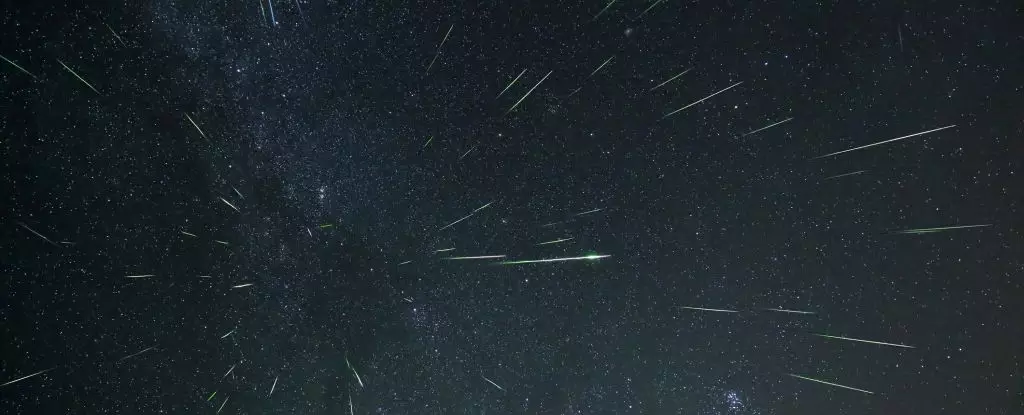As spring unfolds, the sky transforms into a celestial stage, setting the scene for two mesmerizing meteor showers that promise to captivate skywatchers during the months of April and May. From April 17 to 26, the Lyrid meteor shower graces the northern hemisphere, reaching its peak on the nights of April 21 and 22. Simultaneously, the Eta Aquariids shine brightly from April 20 until May 21, peaking around May 2 and 3. Contrary to popular belief, witnessing these extraterrestrial phenomena does not necessitate elaborate telescopes or sophisticated instruments; merely a cozy spot under the open sky and the determination to rise early can unlock this awe-inspiring experience.
The Dance of Cosmic Debris
Meteor showers are more than a mere spectacle; they serve as a reminder of our planet’s dynamic relationship with the cosmos. These ephemeral light shows occur as Earth traverses clouds of dust and debris left in the wake of comets and asteroids. The sight of bright streaks illuminating the night sky is the result of tiny fragments, remnants of ancient celestial travelers, colliding with our atmosphere at hypersonic speeds. As they burn upon entry, they create dazzling trails of light that can be admired without any advanced technology. Each meteor shower reflects the cyclical nature of our solar system, as they occur annually due to Earth intersecting these debris paths in its orbit.
The Lyrid Legacy
The phenomenon known as the Lyrid meteor shower has its origins rooted in the periodic journey of comet C/1861 G1, affectionately named Thatcher. With a magnificent orbit of approximately 422 years around the Sun, this comet has gifted us with a sparkling display of meteors every year when the Earth crosses its debris path. The radiant of the Lyrids is located near the constellation Lyra, making it easier for amateur astronomers and stargazers to identify.
However, this year presents a slight challenge for enthusiasts, as the Lyrid peak coincides with a waning Moon that will be about 40% illuminated. Moonlight can hinder visibility, and EarthSky recommends that the optimal time for catching the celestial magic is on the evening of April 21, prior to moonrise. Under perfect conditions, observers may catch glimpses of 10 to 15 meteors per hour, but alas, those in the southern hemisphere may find themselves deprived of this north-focused display.
Halley’s Haunting Glow
As the celestial showcase continues, the Eta Aquariids—debris left in Halley’s Comet’s path—will grace the sky in May. This comet, known for its dramatic 76-year orbital period, provides a more generous display particularly for those located in the southern tropics. With anticipation, viewers can expect a breathtaking show of 50 to 60 meteors per hour, while northern observers might spot up to 20 meteors at best. The Eta Aquariids are rooted in history, reminding us of humanity’s fascination with the cosmos and the stories told through generations about the returning comet.
Maximizing the Experience
To enrich your meteor shower experience, strategic planning can make a world of difference. Choosing a location with minimal light pollution is key to maximizing visibility. Websites like Time and Date provide valuable insights into the optimal observational conditions based on geographic location, ensuring that you don’t miss out on any celestial fireworks. Additionally, downloading the International Meteor Organization’s meteor shower calendar can help you stay updated on upcoming celestial events throughout the year.
As you prepare to witness these stellar spectacles, allow yourself to be swept away by the wonders of the universe. Each meteor is not merely a streak of light but a messenger from the past, an artifact tracing back to the remnants of our solar system. Engaging with the cosmos invites feelings of humility and awe, connecting us with something larger than ourselves, harking back to our innate desire to explore, understand, and appreciate the boundless universe that exists around us. Enjoy the show, and don’t forget to look up!


Leave a Reply